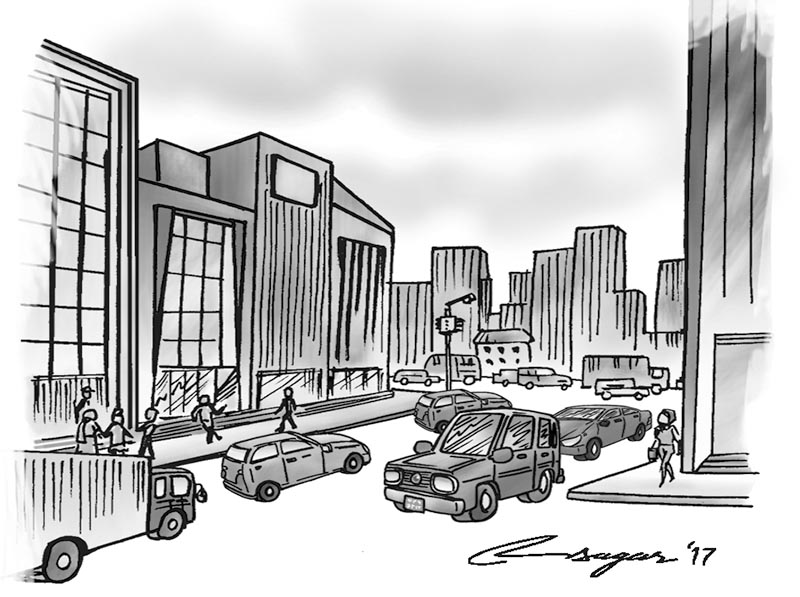Urban development: Undue pressure
The ministers leading such developmental ministries have to break free from their narrow political confinements and petty interests and should honestly give continuity to such crucial projects. National interests and people’s concerns are to be prioritized to the highest degree
The term ‘urban’ is derived from the Latin word ‘urbanus’ denoting towns or cities. Urbanization denotes the process of establishment or extension of urban areas or the transformation of rural areas into urban. It is a process of advancement and progress despite some hazardous consequences if it is carried out in an unplanned way. There was only 2.9% urban population according to the census of 1952/54 which increased to 9.2% in 1991, 13.9% in 2001 and 17.1% in 2011.
Also the number of urban centers increased from 10 in 1952/54 to 33 and 58 in 1991 and 2011 respectively. The fifth census carried out in 1952/54 collected the information of urban population of 10 centers with a population of more than 5000 in the name of prominent settlements. Currently there are 744 local level authorities including 481 rural municipalities, 246 urban municipalities, 13 sub metropolitan cities and four metropolitan cities. This figure clearly depicts the picture of urbanizing Nepal with the continuous and rapid growth in the number of urban population.
Owing to the rapid internal growth of population and heavy influx of people from rural to urban areas there is an undue pressure of population on social, economic and environmental aspects of the urban areas.
It has been a big challenge to address the accommodation needs and urban aspirations of the rapidly growing population. With a view to systematizing the process of urbanization in terms of establishment and management of urban hubs Urban Development Ministry was established in 2069 BS.
At different times different plans were chalked out and policies formulated to facilitate, expedite and manage the process of urbanization and to mitigate its adverse effects.
Nevertheless there have been wide gulfs between policies and their implementation in Nepal.
Urban Development Ministry had to face various obstacles like lack of laws and policies, existence of structural loopholes, lack of skilled human resources etc.
However, by dint of some of the productive efforts made during the last nine months, the ministry seems to be gaining some sort of maturity. It has been found that the ministry has widened enough the horizon of its responsibilities. National Urban Development Policy 2064 has been approved and it has been guiding the efforts of planned and systematic urbanization. Janata Awash Program 2073 has been formulated and implemented with a view to ensuring the access of all the people including the minorities, downtrodden, marginalized, aged, differently abled and the ones on the verge of extinction.
In order to carry on the urban development activities in integrated and coordinated ways a high level coordinating and monitoring committee has been formed this fiscal year.
Retrofitting guidelines 2073 has been approved so as to strengthen the weak structures and the structures affected by the recent devastating tremor.
Altogether 46 urban development committees have been formed within this fiscal year and now the total number of such committees has reached 202.
The external ring road project proposed and planned now to be constructed around Kathmandu Valley was ignored for years and kept in uncertainty for 13 years. Now it has been revived, and its construction is going to be started soon. The detailed project report of the 6.6 km long Chovar Shatungal section of the ring road has been approved denoting the initiation of the project.
The outer ring road with some land development plans and connectivity schemes can be a milestone in the field of planned urbanization.
It is clearly visible that the urban development ministry has laid different policy level and physical foundation stones for facilitating the process of urbanization.
It’s a matter of dismay that political instability has shortened the tenure of ministers in Nepal. It naturally takes time for the ministers to understand different hidden issues and the underlying entanglements, complexities and complications of the ministry. Before delving into the depth and coming up with some gems the ministers have to quit without being sure about the continuation of the important projects they initiated.
How can our developmental projects be productive in such a scenario? Moreover corrupt and incompetent mechanism leads to lower efficiency and it takes time for the new ministers to combat the incompetent mechanism, clear the underlying pollution and treat the paralysis infecting the system.
Symbolically some of the ministers are seen to be leaving the vehicles of their initiatives just after starting them. Proposed satellite cities, smart cities, land development plans, schemes of collective settlements etc. are some of the appreciable initiatives of the ministry and can be seen as crucial efforts towards accelerating the pace of planned urbanization.
The ministers leading such developmental ministries have to break free from their narrow political confinements and petty interests and should honestly give continuity to such crucial projects. National interests and people’s concerns are to be prioritized to the highest degree.
Gautam is a consultant researcher






